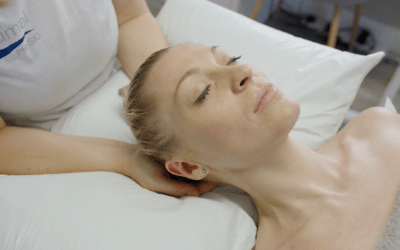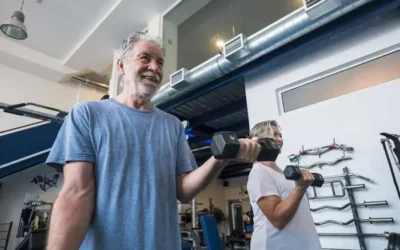Bike set up is crucial
Pelvis and groin injuries tend to be rare in cyclists however when they do arise they can be painful and difficult to treat. The bike set up is usually an important factor but any therapist must determine whether it is the bike or the athletes body which is the main driver for the pain. As such it is important to receive professional advice when setting up your bike. The aim for your set up is to deliver comfort to the rider along with an optimal position from which to deliver power to the pedals and avoid injury. The pelvis is one of only three area which make contact with the bike. The other two being the feet and hands. As the handle bars and pedal positions are relatively fixed the most variance usually arrives from the saddle position. Saddle positions can be adjusted in terms of height to ensure the leg can deliver power through the whole down stroke. It can also tilt to ensure power is evenly split between left and right pistons that are the legs. Additionally and crucially is the forward and backwards position which contributes greatly to the riders comfort (and avoidance of injury), and ability to deliver power to the pedals.
Saddle Design
Saddle designs have also changed over the years but the athlete should experiment with different styles and types to deliver comfort, and trial and error basis is the most effective way of doing so. Saddle set and positioning is crucial to prevent chaffing of the skin in the perineum and is why cyclists pay great attention to skin care. When attempting to offload any saddle soreness or discomfort on long rides, the cyclist can adopt unbalanced and awkward riding positions which are likely to place abnormal load onto structures in an unbalanced fashion. Low load over a long period or high load over a short period are contributing factors for the breakdown of any tissue and the reason for injury must be identified and corrected as well as treatment for the symptoms caused. Incidents such as this may lead to a wide range of injuries from lower spine, to adductor (groin) pain, knee pain and achilles tendinopathy. Groin strains and hernias typically seen in multidirectional, explosive sports such as football, rugby and hockey are rarely encountered in cycling. This is due to the low impact and smooth linear motion of he cycling action. During cycling you require 110 degrees of hip flexion and knee flexion which makes it an excellent exercise for recovery for other sports. Cyclists however tend to be prone to overuse injuries and is the main reason why bike set up is very important place to start with any assessment of injuries.
Pelvis and Groin Injuries
Once the mechanism for injury is identified and altered the tissue repair and rehabilitation process can be managed more effectively and efficiently. During a normal cycling action the pelvis moves in three directions. Lateral movement dipping side to side, tilting backwards and forwards and rotation. Studies have shown that very little movement actually occurs at the pelvis. The sacroiliac joint for instance is only capably of 1-2 degrees of rotation. Therefore the majority of this movement is a multi segmental movement involving the lower back and hip. Nevertheless studies that have measured these small changes have only re-enforced the literature that the pelvis is a very stable structure. After all the pelvis’ main function is to transmit force from the spine and deliver evenly into both lower limbs. Injuries to this area though can occur. One potential problem is gluteal sciatic pain. This can present as local pain at the ischium tuberosity radiating into the posterior thigh. The ischial tuberosity is the site of attachment to the pelvis for all three hamstrings, adductor Magnus, and the sacro-tuberous ligament. The sciatic nerve lies laterally to the ischial tuberosity. Symptoms usually appear typically after cycling or prolonged periods of sitting. Other potential diagnosis should be ruled out by your clinician. These differential diagnosis include referred low back pain, bursitis, piriformis syndrome, and hamstring tendinopathy. MRI scans will assist with the accurate diagnosis for this area although ruling out piriformis syndrome will help in the diagnosis. A more common injury is ischiogluteal bursitis. A bursa is a structure which is present in the body to reduce friction between tissues and allow the body to function effectively. We have hundreds throughout our body which vary in sizes. In cycling the most commonly injured bursa are trochanteric bursa and ischial bursa. These are usual as a result of poor saddle positioning, fit, or shape. This results in asymmetrical pressure on the area in contact with the buttock. As a result the pain is usually only on one side. Treatment usually involves NSAID’s, ice, rest, stretching and most importantly correction of the original causative factor. More stubborn cases may benefit from a corticosteroid injection.
Conclusions
Hopefully you have learned something regarding how the pelvis functions during cycling and why your bike set up is crucial to injury prevention. If you get any aches or pains while out on your bike, my suggestion would be to look at your set up first. The best way to do this is through video analysis or by taking pictures so you or a professional can look at your set up objectively in order to make beneficial changes to your riding position. If they are needed of course! You just never know a small, almost insignificant change may just result in more efficiency, more power to the pedals and greater wattage in output without any increase in effort. Isn’t that the dream for all cyclists? Hope you enjoy watching the Tour de France.




0 Comments